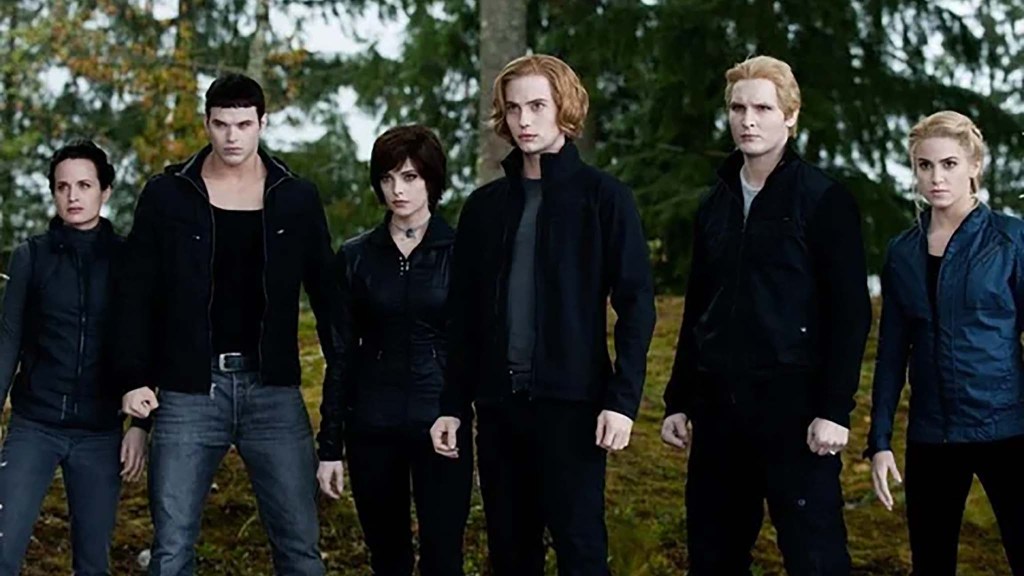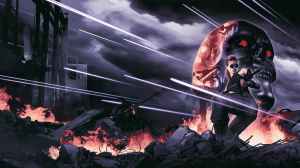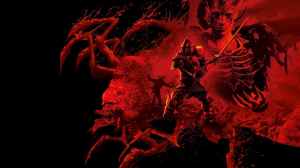While vampires are having their moment in entertainment again thanks to television series like Interview With the Vampire and the upcoming film, Nosferatu, the blood drinking supernatural creatures are timeless — and we don’t mean in that they are immortal. The concept of the vampire has existed in human legend and lore for centuries with stories of the mysterious creatures that exist by feeding on the vital essences (namely blood) of the living found in just about every culture across the globe. But while the vampire of myth is varied with their rules and attributes largely dictated by the culture they’re found in, in fiction things are a little different. For the most part, vampires adhere to a similar set of rules, something that started with the publication of Bram Stoker’s Dracula in 1897. The novel is perhaps the most influential vampire fiction even to this day — and weirdly enough, when it comes to Dracula’s vampires as the gold standard, you may be surprised to learn that the vampires of Twilight are much more “accurate” than Nosferatu or even Anne Rice’s creatures of the night.
Videos by ComicBook.com
While vampire have always been associated with blood and death and dark behaviors in fiction, Stoker’s novel really codified the nature of the beasts. In Dracula, vampires come across as more of a sexual threat — meaning that they are seductive creatures that lure in their victims. Vampirism is also presented in the book as a contagion, specifically contagious demonic possession which can be passed from the vampire to their victim. These elements are very much of the moment for the novel, striking a deep chord with audiences in Victorian Europe at the time as vampires stood in for real-world dangers such as illness (namely tuberculosis and syphilis) were common killers. But Dracula went a bit further than just leaning into the public health fears of the day to make the vampire a more dynamic and terrifying character. Stoker’s work established the “rules” of being a vampire, or rather, the vampiric attributes. Those include enhanced strength and speed, an array of supernatural powers (including shapeshifting and mind control), and introduced the idea that while a vampire is more at home at night, daylight doesn’t actually harm them. The sun just somewhat limits their powers — namely shapeshifting.

Now, if you’ve read this far and hit upon the “sunlight doesn’t hurt vampires” of it all and are confused, you’re not alone. Contemporary vampires in fiction are vulnerable to daylight and we have the original Nosferatu film to thank for that — the film made sunlight lethal to the creatures as well as made some other modifications. Nosferatu’s vampires aren’t seductive or physically attractive and you can’t “catch” vampirism in Nosferatu’s world, but it’s the daylight thing that caught on and has become a defining feature of vampires in fiction ever since. A “new normal” if you will. But if Dracula is the gold standard, the Nosferatu vampire is the outlier — and the Cullens are closer to the real deal.
[RELATED: No, Nosferatu Is Not the Vampire’s Name (It’s Not Dracula Either)]
In Twilight, the vampires are much closer to Stoker’s Dracula than anything else. They’re attractive and, because of their attractiveness, have a seductive quality that they could arguably be used to lure in victims (Edward Cullen would never, but we digress). They also have the physical attributes that Stoker gave Dracula, such as superhuman strength and speed and even endurance, not to mention that they possess supernatural powers. Vampires in the world of Twilight exhibit a range of gifts, including the ability to read minds and mind control. Most “accurate”, however, is that sunlight doesn’t actually bother the vampires in Twilight but still offers a “handicap”. While Dracula saw a reduction in powers in the daylight, for the Twilight vampires it’s their appearance that creates the problem. Twilight vampires notably sparkle in the light and while that doesn’t necessarily weaken them, it does sort of out them as being, well, vampires — and that makes laying low and hiding among humanity a bit of an issue.
Ultimately, there are a lot of “right” ways to be a vampire in fiction and each new popular vampire story changes what we expect from the supernatural creatures. Dracula inspired Nosferatu, Nosferatu introduced the sunlight weakness which carried forward to countless other stories, including Anne Rice’s vampires, which in turn made their own changes to accepted vampire traits and then themselves influenced contemporary representations of vampires to such a level that one could make the argument that Rice’s vampires are the new “gold standard”. It’s just interesting to consider that the Twilight vampires might not be as far from accurate as Stoker envisioned them as we think – and just as accurate as anything Nosferatu has to offer.
Nosferatu opens in theaters December 25th. The Twilight Saga is available to stream on Hulu.








